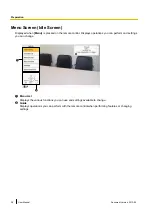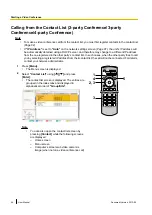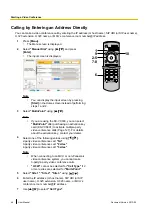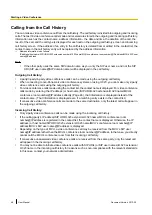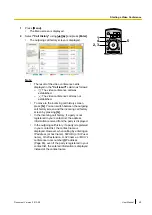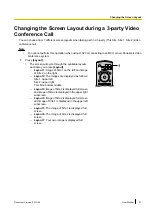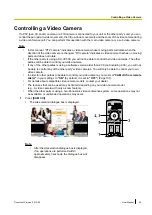
Connecting to a Non-Panasonic Video Conference
System
You can connect to a non-Panasonic video conference system and have a 2-party video conference call.
Intranet
Note
•
Non-Panasonic video conference systems you want to connect to must meet the following criteria.
Confirm the settings of the non-Panasonic video conference system.
–
Supports SIP or H.323 communication
–
Supports communication with the H.264 Baseline Profile and H.264 High Profile
–
Supports communication with the G.711, G.722, G.722.1, and G.722.1 Annex C voice codecs
•
For details about the types of non-Panasonic video conference systems you can connect to, contact
your dealer.
•
Video conference calls to a non-Panasonic video conference system through a SIP server using a SIP
URI are not guaranteed (Page 116). IP addresses must be specified to make calls.
•
The connection specifications (e.g., resolution) and available functions (e.g., content sharing) differ
depending on the model type you connect to. For details, contact your dealer.
•
When connecting to non-Panasonic video conference systems, only 2-party video conference calls are
possible.
•
Audio sent to the other party is monaural.
•
While you are displaying a sub video camera’s image, you cannot send a still image from the sub video
camera.
•
Encrypted communication may not be supported. In such cases, connect to a non-Panasonic video
conference system over an intranet or via a VPN. For details, contact your dealer.
•
The maximum bandwidth specified in the settings at the beginning of the connection is applied for the
duration of the connection to a non-Panasonic video conference system. Depending on the network
conditions, you must specify an appropriate bandwidth setting (Page 99, Page 132).
•
It may be necessary to change your maximum bandwidth depending on the non-Panasonic video
conference system you are connecting to. If this is necessary, you can register a maximum bandwidth
in local site settings (Page 132).
52
User Manual
Document Version 2013-09
Starting a Video Conference

